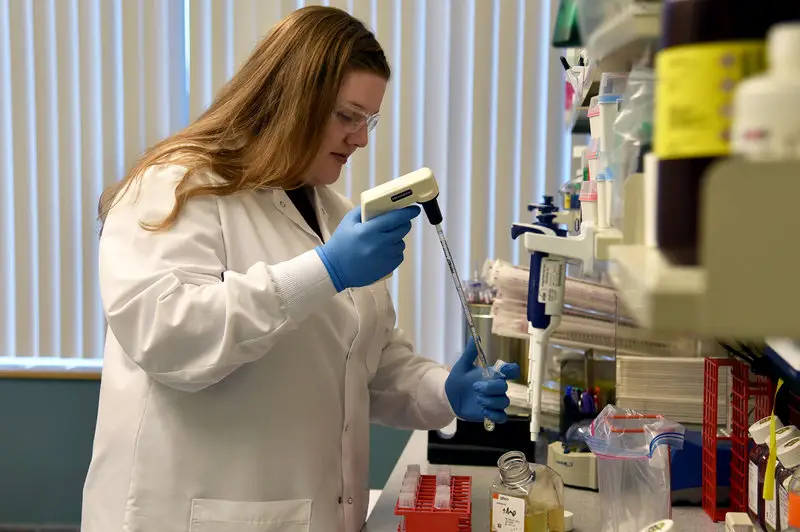
I’m very glad to see some data emerging on the monoclonal antibody therapies that have been in the works. Regeneron and Eli Lilly/Abcellera are two of the front-runners in this field, which could pick up some very much needed slack while the many vaccine trials are going on. And late yesterday a preprint emerged from the Regeneron effort, looking at challenge studies in animal models. Since we were just looking at the primate challenge studies in the various vaccine efforts the other day, this is timely indeed.
This team has a mixture of two monoclonal antibodies (REGN10933 and REGN10987). The isolation of these has already been described, as well as a study looking at their effectiveness versus Spike protein mutations. That latter paper illustrates some key points – when a patient develops their own antibody response to an infection like this one, there’s a wide variety of antibodies that get raised. Some of them are neutralizing by themselves, and some not, but that simultaneous defense by a number of different antibodies is definitely a good feature. By contrast, look at what happens if you try the one-antibody-only technique of treating a pathogen with an injected monoclonal antibody: you’ll hit the target hard, but at the same time you’re applying strong selection pressure for any viable mutants that can escape the attack. And that’s what Regeneron saw in their model systems with single antibody treatments – mutants that would normally have a low profile with no particular advantage suddenly had a chance to amplify if they escaped the binding of the monoclonal antibody. Thus the mixture of two monoclonals, which bind to non-overlapping regions of the Spike protein. Now a virus needs two separate escape mutations, which is extremely unlikely.
The paper shows two rhesus challenge experiments, each done by injecting the animals with 50 mg/kg of the mAb mixture (25 mpk of each antibody), followed three days later by exposure (both intranasal and intratracheal) to either 1×105 or 1×106 PFU (plaque-forming units) of coronavirus. Those doses, when compared to the ones we’ve been seeing for the vaccine challenge experiments, are bracketed on the low side and the high side of the range. For the lower dose (Figure 1B in the paper), it looks like subgenomic RNA (which is indicative of replicating virus) in the nasal swabs is pegged at the low limit of detection in all animals at all time points, and sgRNA in the lungs is only detectable in one animal at Day 1. In the higher-dose experiment (Figure 2B), sgRNA is detected (low level) in the nasal swabs at Day 1 and Day 2, but not thereafter. The animals were also checked via oral swab, and the sgRNA was also cleared very strongly from these samples. I should note that they also tried a much lower dose of the antibody cocktail (0.3 mpk) in that second experiment, which was ineffective.
There’s also a treatment experiment, where the animals are not pre-treated, but dosed at the higher challenge level and then after a day are given either 25 or 150 mpk of the antibody cocktail to see if it can deal with the infection once it gets going. The sgRNA data show significantly enhanced clearance of the virus for both doses – in fact, the two look pretty similar, except (oddly) the 150 mpk group shows higher viral titers on Day 1. Not sure what’s going on there, but it looks like the mAb cocktail would be an effective treatment as well as a prophylaxis. Lung histology on all the infected animals confirmed this – the signs of viral pneumonia were far milder in the treated animals than in the controls.
The paper goes on to examine a golden hamster model. That’s because although rhesus macaques are certainly a lot closer to human, they don’t really get hit hard by coronavirus symptoms. The virus infects them and replicates, so it’s a good model in that sense, but the animals don’t show any severe symptoms. The hamsters, on the other hand, have it rough: severe lung pathology, high viral load, and noticeable weight loss. The same sorts of prophylactic experiments on the hamsters showed that all the doses tried (0.5, 5, and 50 mg/kg) protected the animals from weight loss, with a strong decrease in viral sgRNA load in lung tissue at 5 and 50 mpk. A treatment experiment (as done with the monkeys) showed significant effects at the 5 and 50 mpk doses as well.
I was also glad to see an analysis of Spike protein mutants before and after antibody treatment in the monkeys. The good news is that nothing worrisome seems to have been raised up by the treatment – there were new mutant forms picked up, but these showed up in both the antibody-treated animals and in the placebo controls, which just shows you that the virus was indeed replicating in these animals (and throwing off mutations, as viruses do), but that the antibody treatment wasn’t causing anything new to be selected. There was also no sign of antibody-dependent enhancement in any of the treated animals.
What we don’t know from this study is the duration of prophylaxis: how long would someone be protected after a dose of the antibody cocktail? That really has to be answered in humans, though – it would be nice to get a number from a primate study, but you’d never be sure how well it would extrapolate to humans over such a longer time. But what this work demonstrate is certainly enough: the antibody cocktail appears to be effective both as a preventative and as a treatment, and it seems to have effects on viral replication that are in the same range as those seen in the vaccine studies reported to date (the more promising ones, at that). This is good news, and I am very eager to see human data.
